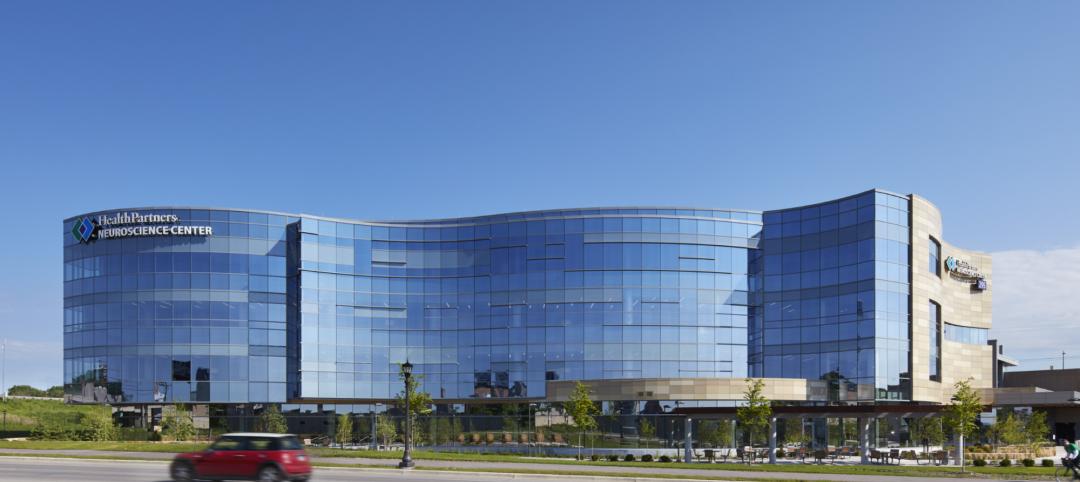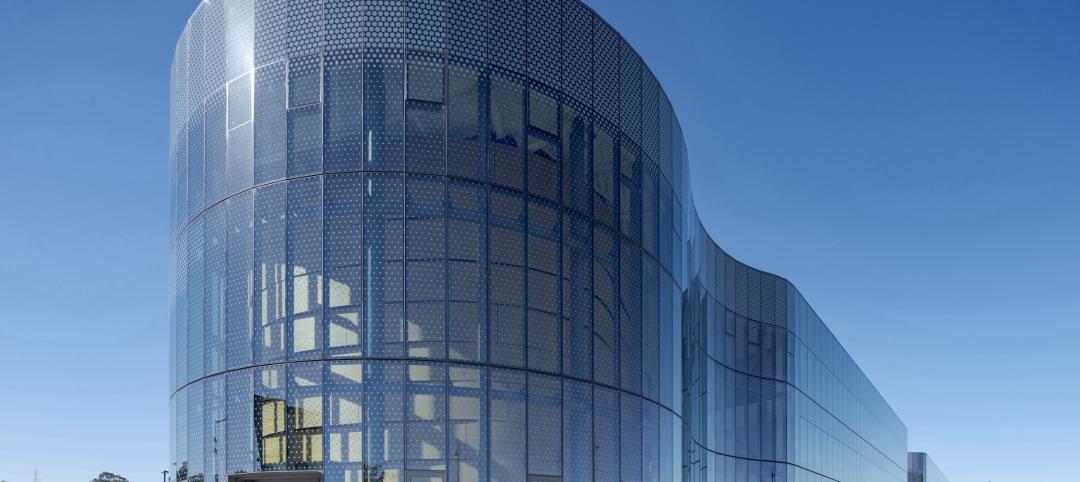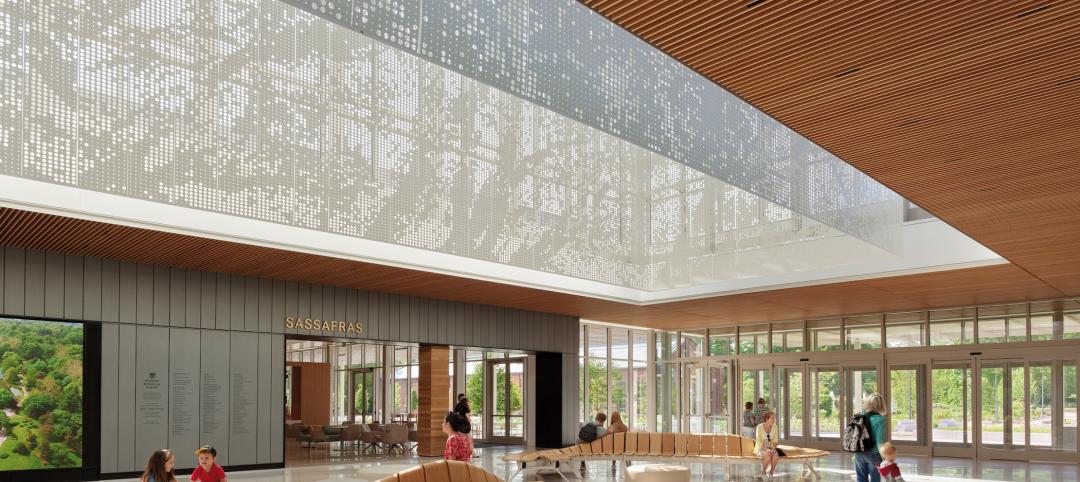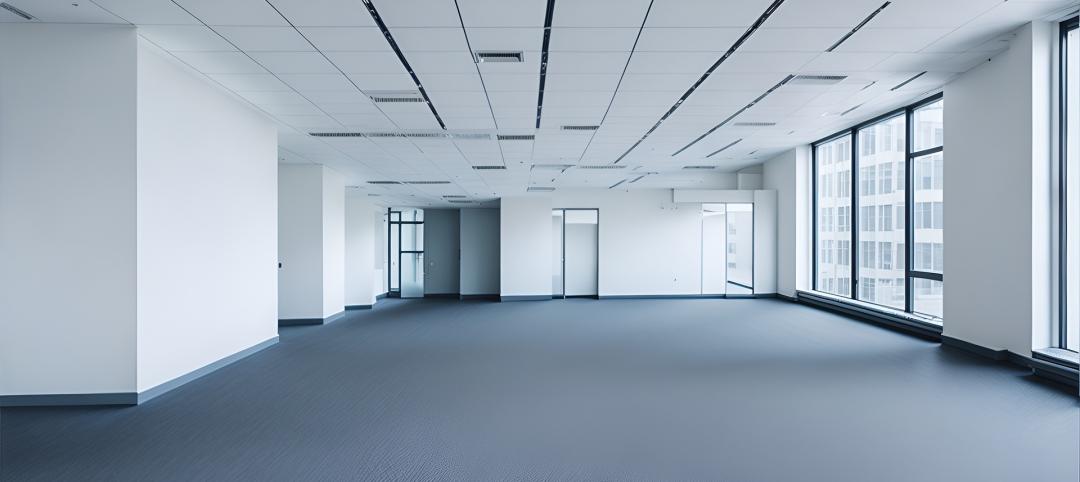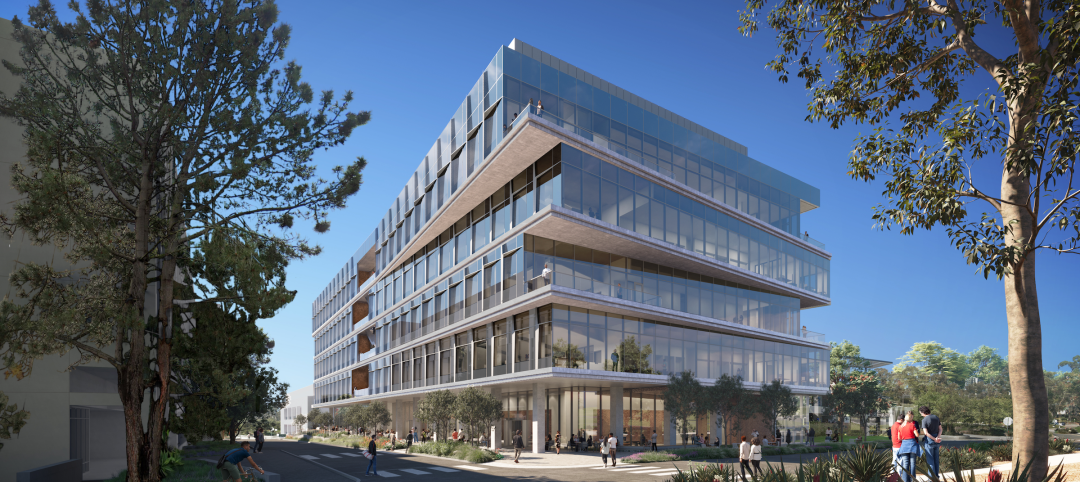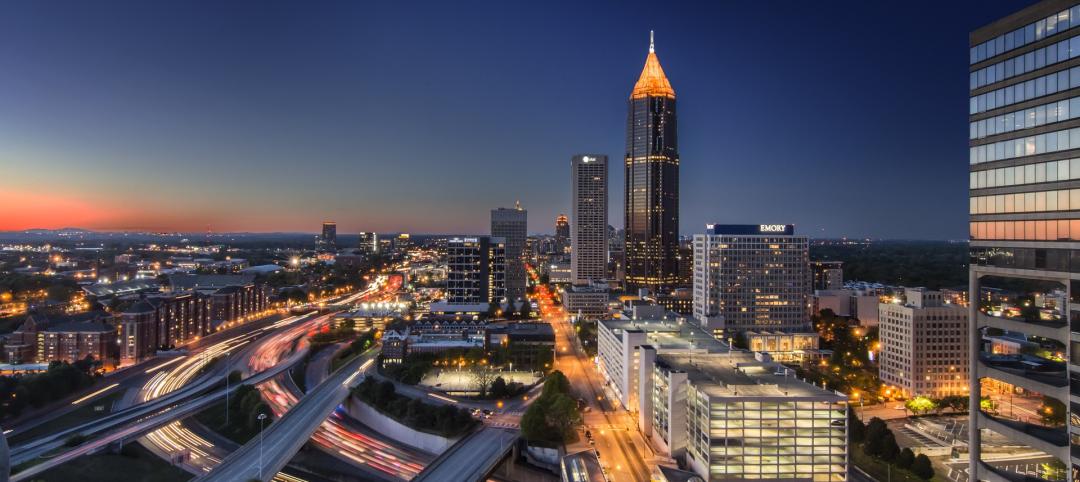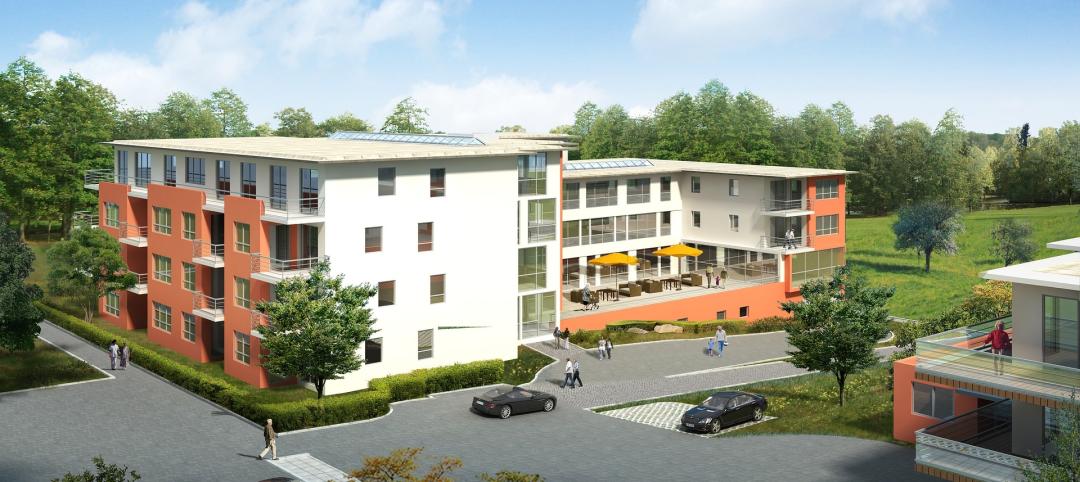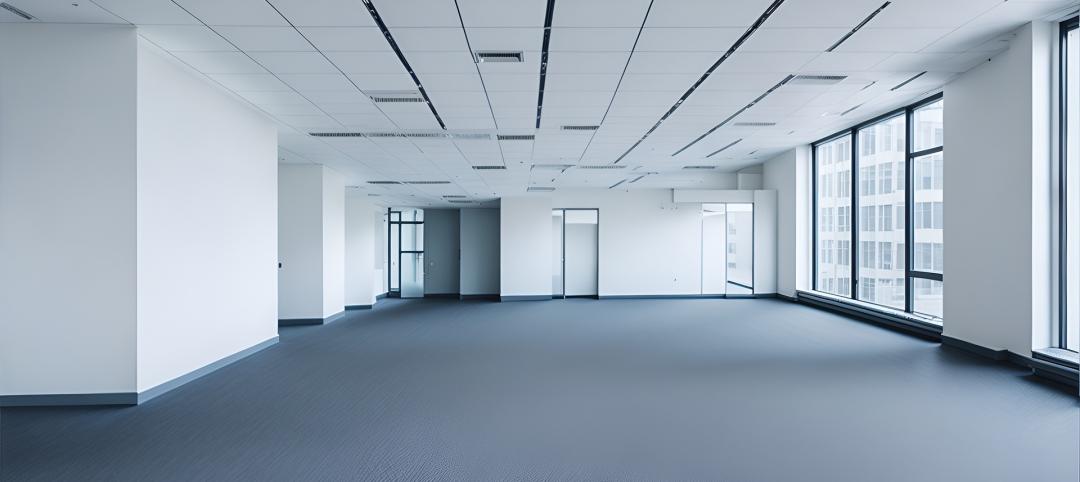Three “Ms”—mobility, multifamily, and multipurpose—will be common and key drivers of design across many practice areas, according to Gensler’s Design Forecast 2023, based on the international firm’s work in more than 80 countries.
The abiding premise of this 189-page report, published by Gensler Research Institute, is that the world is changing radically, and design must respond accordingly with bold new ideas if it’s to impact this transformation of buildings and cities. “Crisis and change have taught us a new way to approach design at Gensler,” write the firm’s co-CEOs Diane Hoskins and Andy Cohen. “It is an ongoing process, where research leads to experimentation and new ideas, which, in turn, lead to further investigations, discoveries, and motivations.”
The forecast identifies 10 megatrends—culled from the firm’s 29 practice areas—that Gensler believes will transform the future of cities:
- Reclaiming experience by prioritizing people’s needs and expectations
- Designs that connect work and life
- Building transformation through redevelopment and adaptive reuse of “stranded” assets to high-value property
- Attainable housing through greater multifamily design
- Decarbonization as part of larger social impact strategies
- Mobility, spurred by electrification, that helps to revitalize communities
- Equitable design that influences master planning to completed buildings
- Intelligent places, driven by technology that redesigns user experiences
- Flight to quality, where Class A space have competitive advantages
- Office as a destination, by featuring a mix of space that facilitate occupant focus and connection.
Rethinking physical spaces

Gensler breaks down its forecast into four quadrants—cities, work, lifestyle, and health—and within each provides more specific insights by market sector and building type. Interspersed throughout the forecast are images of recent Gensler projects that illustrate various points of emphasis.
The forecast’s insights, for the most part, reiterate ideas and strategies that Gensler—and, truth be told, other AEC firms—have been advocating for years: for example, that places need to be designed to encourage engagement and create communities; that mixed-use design and construction are reshaping urban areas more equitably; that digital technology opens buildings to providing more inclusive experiences for their occupants.
What’s changed, and made design more urgent, has been a confluence of societal and economic events instigated by the pandemic and climate change that has altered people’s attitudes and habits about where they work, live, and recreate.
“This is an opportunity to rethink the physical workplace to offer a mix of unique and fulfilling experiences that can attract people,” states Darrel Fullbright, Gensler’s Office Buildings Development Leader, in the forecast’s “Work” section. “The real market differentiator is a new kind of office that allows tenants to sit, stand, and work while moving through sheltered, tempered outdoor space—all while feeling healthier and more connected to their community.”
Giving greater purpose to buildings
Here are some other notable observations in the forecast about the future of design for the built environment:
- Climate action and sustainability are top-of-mind concerns for developers, whose accountability and project transparency are steadily becoming mandatory in more cities. Gensler foresees carbon performance certifications permeating American and global real estate in the immediate future. The world will follow Europe’s lead as it charts a course toward regenerative systems. Transforming existing buildings and materials with reuse strategies will supersede new construction. “Certifications will emerge to better define and quantify socially responsible strategies—the ‘S’ in ESG,” writes Gensler.
- Supporting emotional and mental well-being will become a differentiator for recruiting and retaining talent. Workplaces that provide a sense of health and wellness will have an ecosystem of spaces that provide workers choice. New tools and codified metrics will allow AEC firms and their clients to understand how the built environment affects health and wellness.
- Education is the industry’s second-largest market sector in nonresidential building construction spending. Research shows that students want more choice, more hybrid learning, and generally improved student experiences. In response, institutions are leveraging lessons learned during the coronavirus pandemic while keeping a careful eye on declining enrollment and the global economy. The challenges they continue to face revolve around redefining the purpose of the physical campus, expanding services to support the whole student, and creating environments that prioritize equity.
- In the Residential market sector, the right reuse strategies and tools have started to reimagine underperforming office buildings and retail centers into housing. Trends in “flexible housing—modular buildings and kit-of-parts floor plans—will allow developers to evolve as market needs and expectations shift.
- In one of the hotter growth markets, sports and entertainment, Gensler sees success in terms of moving beyond game day. To thrive as cultural and economic anchors, sports venues must appeal to a broader array of fans than ever before, capturing even non-fans on game days and off days alike. Sports venues are evolving into dynamic hubs that foster social connection and community vibrancy.
- In a consolidating healthcare industry, systems must unlock the promise of scale through mergers and consolidations, the integration of digital technologies, and the harnessing of big data, against a difficult economic backdrop and labor shortages. Community-based approaches that equitably engage all constituents will be essential to delivering exceptional experiences that earn patient-provider loyalty and improve overall population health. Gensler also suggests that healthcare systems will redefine their services to tackle social issues such as affordable housing and food insecurity. AI and machine learning tools will transform healthcare by predicting and responding to patient preferences. Involving patients and providers in the design and implementation of digital solutions will shrink the health equity gap.
- Healthcare also becomes more critical as the world’s population ages. By 2050, 16 percent of that population will be 65 or older. And more people are living to be 100. This trend represents a “huge opportunity” for the senior living industry, states Gensler. The challenge is that rural senior living models aren’t as appealing as they used to be. Older adults are more active and living longer, and they are curious about living in urban centers closer to family and city conveniences. To make that future a reality, “we must design cities to be more affordable and more friendly to older adults,” Gensler states.







Related Stories
Healthcare Facilities | Sep 9, 2024
Exploring the cutting edge of neuroscience facility design
BWBR Communications Specialist Amanda Fisher shares the unique considerations and challenges of designing neuroscience facilities.
Giants 400 | Sep 6, 2024
Top 100 Architecture Engineering Firms for 2024
Stantec, HDR, Page, HOK, and Arcadis North America top Building Design+Construction's ranking of the nation's largest architecture engineering (AE) firms for nonresidential building and multifamily housing work, as reported in BD+C's 2024 Giants 400 Report.
Office Buildings | Sep 6, 2024
Fact sheet outlines benefits, challenges of thermal energy storage for commercial buildings
A U.S. Dept. of Energy document discusses the benefits and challenges of thermal energy storage for commercial buildings. The document explains how the various types of thermal energy storage technologies work, where their installation is most beneficial, and some practical considerations around installations.
Giants 400 | Sep 6, 2024
Top 200 Architecture Firms for 2024
Gensler, HKS, Perkins&Will, Corgan, and Populous top Building Design+Construction's ranking of the nation's largest architecture firms for nonresidential building and multifamily housing work, as reported in BD+C's 2024 Giants 400 Report.
Designers | Sep 6, 2024
How to promote wellness through interior design
We spend most of our lives inside, and the spaces we inhabit have the potential to greatly impact our health depending on the kinds of design decisions made.
Office Buildings | Sep 5, 2024
Office space downsizing trend appears to be past peak
The office downsizing trend may be past its peak, according to a CBRE survey of 225 companies with offices in the U.S., Canada, and Latin America. Just 37% of companies plan to shrink their office space this year compared to 57% last year, the survey found.
University Buildings | Sep 4, 2024
UC San Diego’s new Multidisciplinary Life Sciences Building will support research and teaching in both health and biological sciences
The University of California San Diego has approved plans for a new Multidisciplinary Life Sciences Building, with construction starting this fall. The 200,000-sf, six-level facility will be the first building on the UC San Diego campus to bridge health science research with biological science research and teaching.
Codes and Standards | Sep 3, 2024
Atlanta aims to crack down on blighted properties with new tax
A new Atlanta law is intended to crack down on absentee landlords including commercial property owners and clean up neglected properties. The “Blight Tax” allows city officials to put levies on blighted property owners up to 25 times higher than current millage rates.
Resiliency | Sep 3, 2024
Phius introduces retrofit standard for more resilient buildings
Phius recently released, REVIVE 2024, a retrofit standard for more resilient buildings. The standard focuses on resilience against grid outages by ensuring structures remain habitable for at least a week during extreme weather events.
Adaptive Reuse | Aug 29, 2024
More than 1.2 billion sf of office space have strong potential for residential conversion
More than 1.2 billion sf of U.S. office space—14.8% of the nation’s total—have strong potential for conversion to residential use, according to real estate software and services firm Yardi. Yardi’s new Conversion Feasibility Index scores office buildings on their suitability for multifamily conversion.



